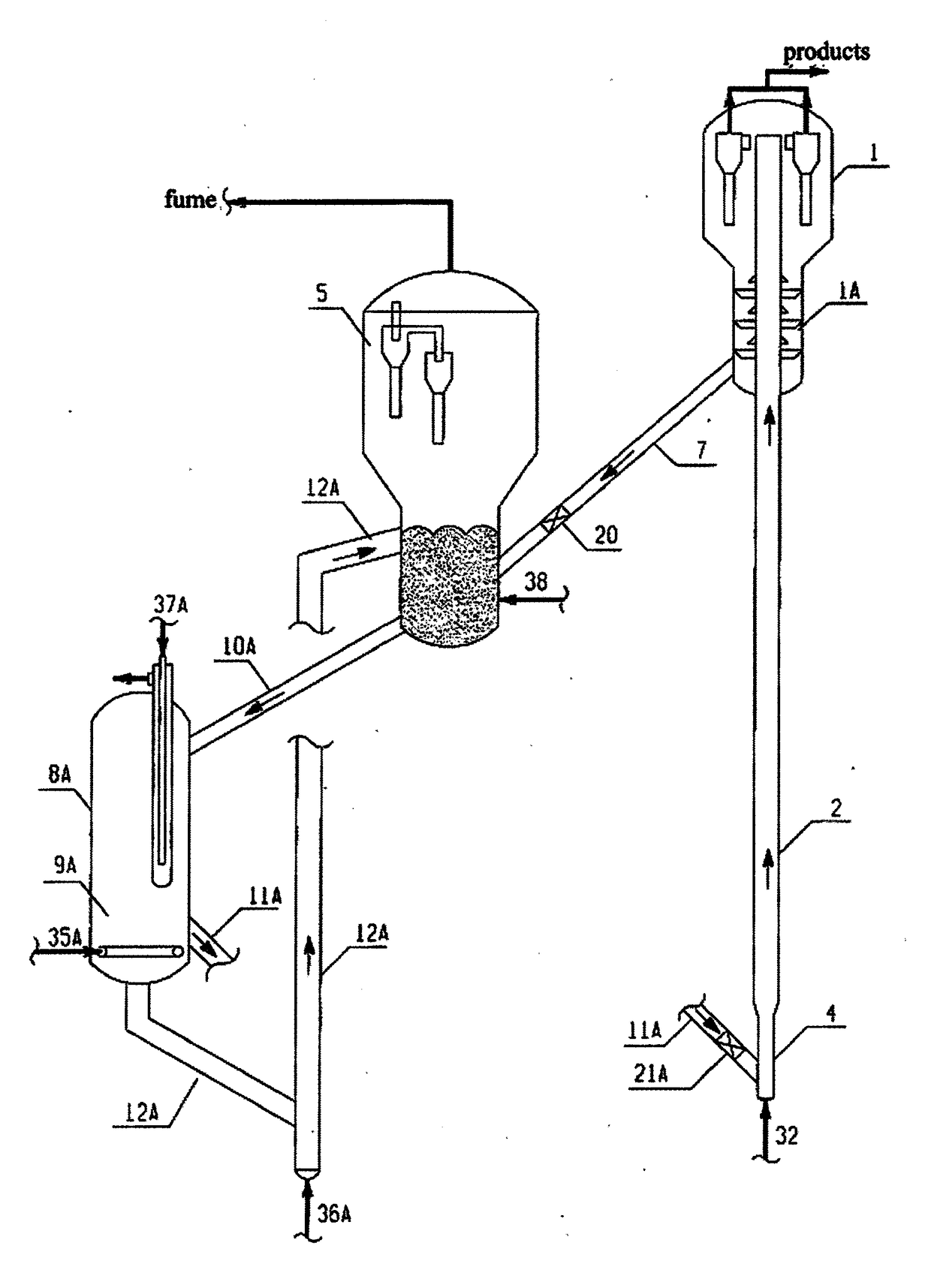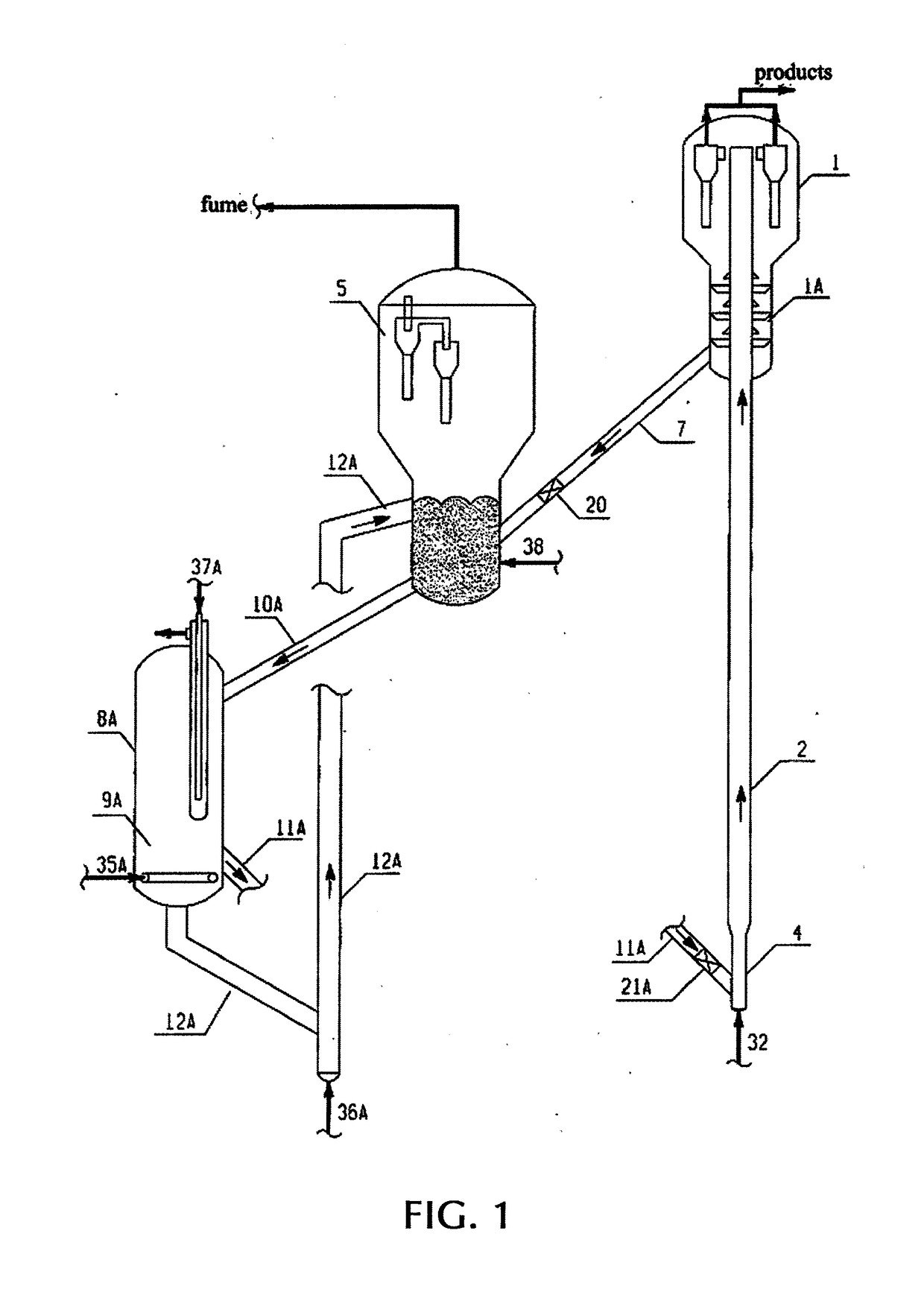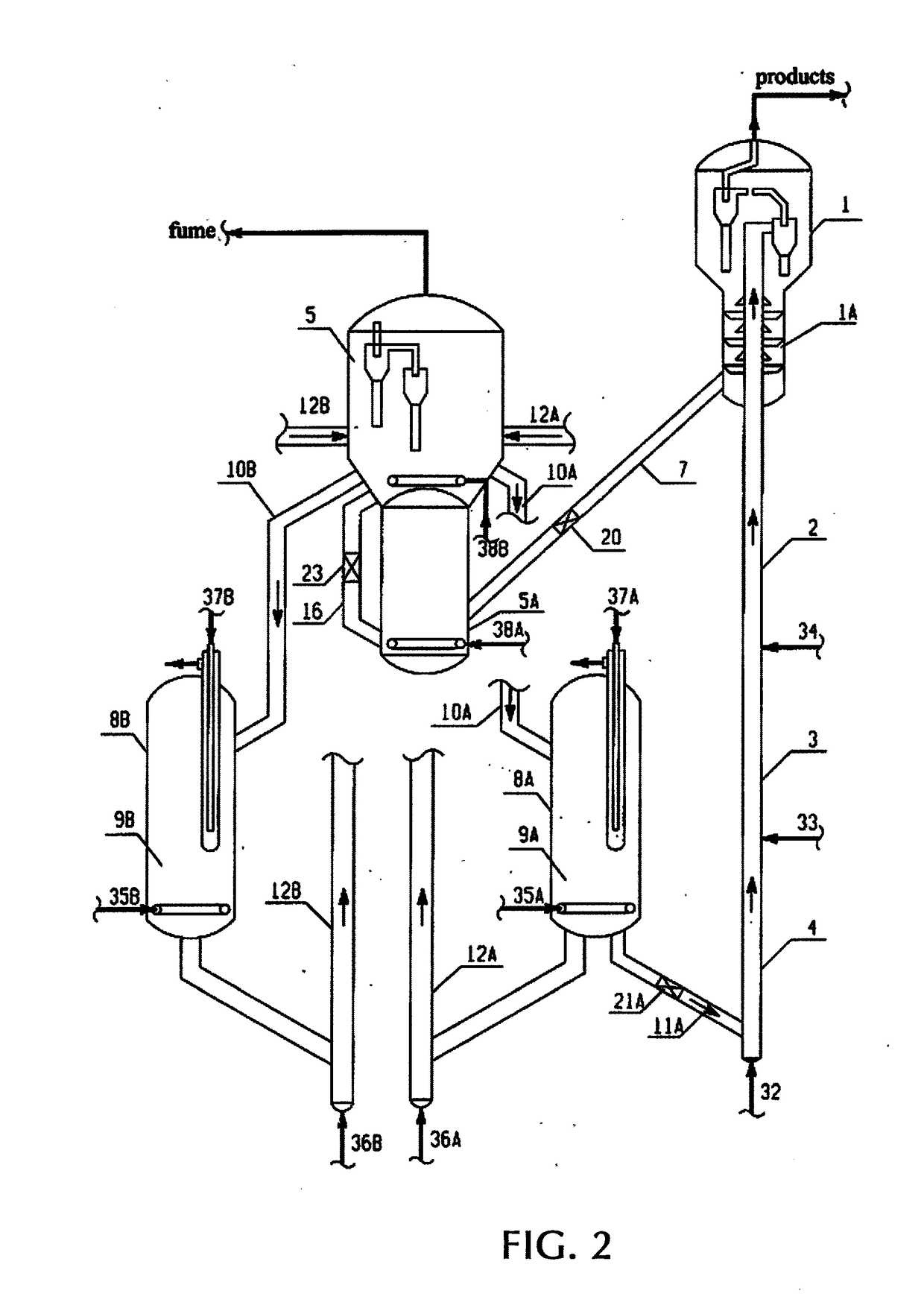Cold regenerated catalyst circulation method and device therefor
a circulation method and catalyst technology, applied in the field of petroleum processing and chemical industry, can solve the problems of low overall yield of light oil, low dry gas coke yield, heavy oil catalytic cracking device, etc., and achieve the effect of increasing the driving force of catalyst cycling and increasing the resistance force of the cycling system
- Summary
- Abstract
- Description
- Claims
- Application Information
AI Technical Summary
Benefits of technology
Problems solved by technology
Method used
Image
Examples
Embodiment Construction
)
[0072]In order to make the objects, the technical solutions and the advantages of the embodiments of the present invention clearer, the technical solutions of the embodiments of the present invention will be described clearly and completely below by referring to the drawings of the embodiments of the present invention. Apparently, the described embodiments are part of embodiments of the present invention, rather than all embodiments. On the basis of the described embodiments of the present invention, all the other embodiments that a person skilled in the art obtains without paying creative work are within the protection scope of the present invention.
[0073]The present invention will be further described by referring to the drawings below.
[0074]FIG. 1 is a typical schematic representation of the present invention (1 cold regenerated catalyst cycling process)
[0075]As shown in FIG. 1: the cold regenerated catalyst cycle of the present invention comprises the settler 1, and the riser r...
PUM
| Property | Measurement | Unit |
|---|---|---|
| superficial gas velocity | aaaaa | aaaaa |
| temperature | aaaaa | aaaaa |
| reaction temperature | aaaaa | aaaaa |
Abstract
Description
Claims
Application Information
 Login to View More
Login to View More - R&D
- Intellectual Property
- Life Sciences
- Materials
- Tech Scout
- Unparalleled Data Quality
- Higher Quality Content
- 60% Fewer Hallucinations
Browse by: Latest US Patents, China's latest patents, Technical Efficacy Thesaurus, Application Domain, Technology Topic, Popular Technical Reports.
© 2025 PatSnap. All rights reserved.Legal|Privacy policy|Modern Slavery Act Transparency Statement|Sitemap|About US| Contact US: help@patsnap.com



